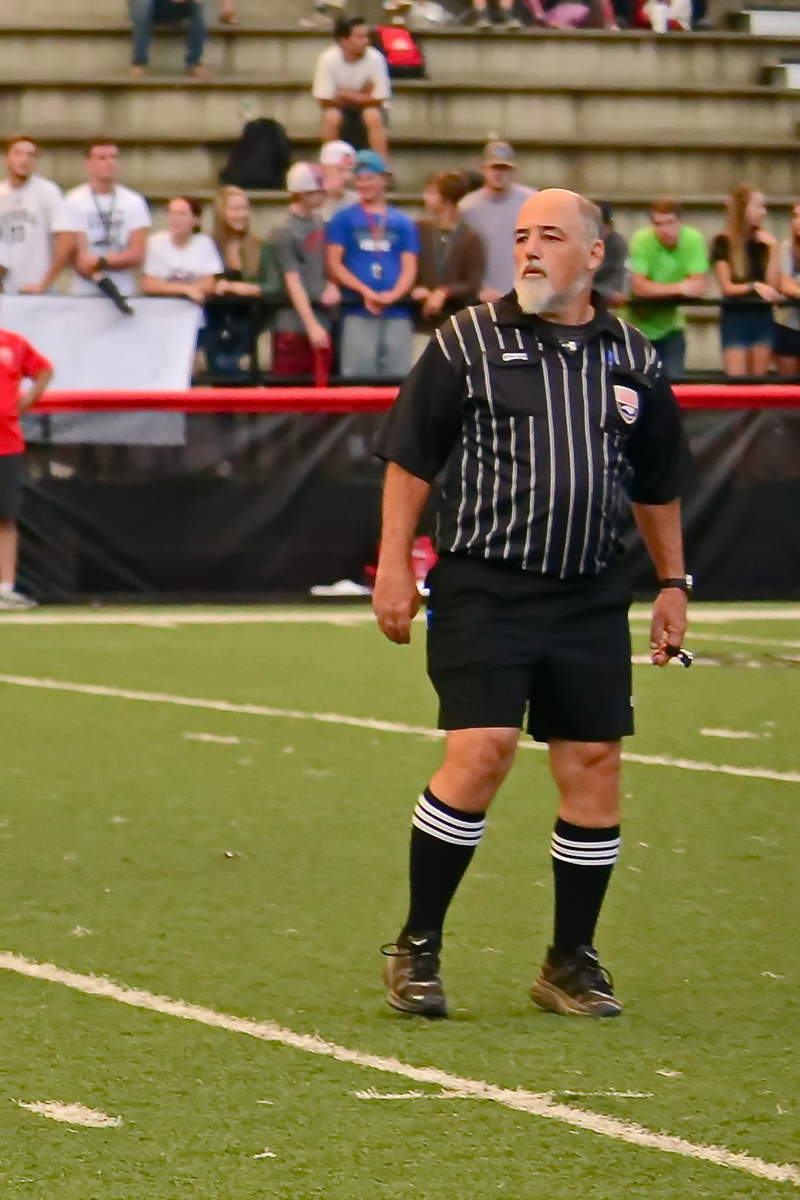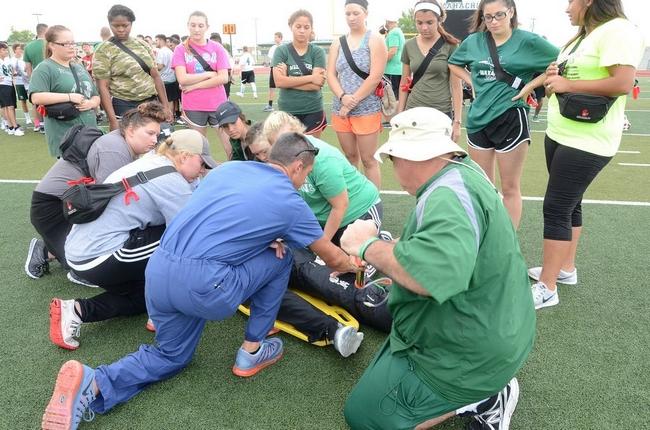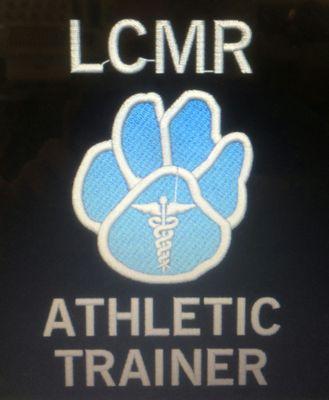
Article reposted from IndyStar
Author: Kyle Neddenreip
http://indy.st/2a9suBx
When the Brebeuf Jesuit football team has its first contact practice on Aug. 4, it will be business as usual for athletic trainer Patrick Miller.
Except for one major difference. Miller will carry a device with him – about the size and shape of a cell phone – that will alert him when any of the players on the field suffers a significant hit to the head. The hit, or series of hits that may put an individual player in jeopardy of a head injury, will be timestamped with the player’s name and number on Miller’s hand-held device.
“On practice days, there are 80 or 90 kids on every corner of the field,” Miller said. “I can’t see everything. I’m going to miss stuff. So that’s really the most critical piece of having this.”
Or as Brebeuf athletic director Ted Hampton said, “There’s an ‘eye’ on the kids at all times.” That’s the idea, anyway. For the first time, Brebeuf has outfitted all of its players with the Riddell InSite Impact Response system. Each helmet is fitted with a five-zone sensor pad inside the liner that measures the severity of impact on hits to the helmet. When an impact or series of impacts exceeds a pre-determined threshold, Miller – or any trainer at a school using the system – receives an alert.
The system is not designed as a “concussion-prevention” device. But the technology could prove valuable in a sport that has faced increased concerns in recent years over the long-term effects of head injuries on all levels. A spokesperson for Riddell said Brebeuf is one of 619 programs at the youth, high school or college level as of Friday that are using the InSite system, which was first utilized during the 2013 season at a handful of schools.
It’s not a perfect science. One in-state college trainer said her InSite device alerted her five times in one game to an individual player sustaining a potential dangerous hit, though the player didn’t show any concussion symptoms in testing. The opposite has also been true. The system is expensive, a potential deterrent for already cash-strapped high school programs. InSite costs $150 per player and $200 for the alert monitor (in addition to the cost of the helmets).
Can technological advances like InSite propel the sport into a safer era? More data is needed. But trainers and coaches who have used the system believe it is a step in the right direction.
“It’s awesome for concussion awareness,” said Dr. Todd Arnold, a physician at St. Vincent Sports Performance with an extensive background in treating concussions and the team trainer for Carmel’s football program. “The more people talking about it, the better for the kids who play collision sports. There was a time when it was a taboo subject and nobody wanted anything to do with it.”
Erin Foresman is at the forefront among those who have used the InSite system on a day-to-day basis. Foresman is the head athletic trainer for the Division III Manchester University football program, which has used InSite since 2014 at the urging of former coach Shannon Griffith, who is now in a fundraising role at the school.
Foresman has utilized InSite to communicate information she might have otherwise missed. Last season, one Manchester player was consistently involved in hits that dinged Foresman’s hand-held device.
“We looked back at the way he was tackling on game film,” Foresman said. “We were able to fix the problem. In that sense, we were able to use it as a teaching tool.”
Like Miller, Foresman said the system gives her another set of eyes on the practice field. Players can’t just “shake off” a hit that exceeds the threshold or hope that it goes unnoticed. If Foresman is alerted by the device, she automatically puts the player through a sideline assessment.
But it’s not foolproof, either. Foresman said it’s become obvious in two years using the system that the hits are harder – or there can be more of them – on game day than in practice.
“That’s one thing I have trouble with,” Foresman said. “In games, they go a little bit harder. I had one player where the alert went off five times in a game, but he didn’t have any concussion systems when I tested him. That part makes it a little tough.”
Riddell outfits each sensor with a threshold based on the position of the player. For example, the impact of a hit to an offensive lineman’s helmet may not match that of a wide receiver. The thresholds are based on information the company has gathered since 2003.
Foresman has begun her own research to track how many times the alert system is dinged by position. The reality, Arnold said, is that each individual has their own threshold when it comes to sustaining a concussion.
“Until you know what someone’s individual threshold is, it’s not a tool you want to depend on completely,” he said. “But it is so much better than nothing.”
Riddell doesn’t promote InSite as a concussion-prevention system but as a tool to help trainers and coaches recognize issues before they mushroom. Players at Virginia Tech have been outfitted with sensors since 2003 (called the Head Impact Telemetry System), which is information Riddell has used in developing InSite. Arkansas, Iowa and Wisconsin are among the major college programs that have implemented InSite.
“We’re legitimately trying to protect the future of football,” said Hampton, the Brebeuf athletic director. “The approach today is much different than it was a few years ago. We’re smarter. Now we’re always looking for more we can do.”
Brebeuf isn’t the only program using InSite. Pendleton Heights has 38 helmets outfitted with the Riddell system, beginning last year under former coach and athletic director John Broughton and continuing this season under first-year coach Jed Richman.
“It’s good for a lot of reasons,” Richman said. “It’s good for the sport and good for parents. It’s another safety net.”
Elkhart Memorial and Huntington North are other Indiana high school programs that are at least partially outfitted with InSite, Riddell sales representative Erich Kennerk said. Other college programs now involved are Anderson and Butler.
If InSite proves a success, it could go a long way to alleviating concerns from parents. Kristin Roberts’ son, Jack, sustained a concussion in middle school before playing in high school at Brebeuf. Her younger son, Will, is now a senior defensive end at Brebeuf.
“When Jack got a concussion, it was a little overwhelming,” she said. “It was scary. But I feel reassured if this technology does what they say it will. Kids aren’t going to go to the trainer on their own. But I think this is a great step. I’m excited.”
Roberts admits that if her sons were 10 years younger, she might have a difficult time allowing them to play football. She’s not alone. Former players from Mike Ditka to Troy Aikman to Terry Bradshaw – and others – have said they’d have a difficult time allowing their sons to play football with their current knowledge of head injuries.
In March, the National Football League publicly acknowledged the connection between head trauma caused in the sport and chronic traumatic encephalopathy (CTE) for the first time.
But some inside the sport believe the “sky is falling” narrative is far from accurate. While youth participation numbers had been tracking down since 2010, USA Football reported 1.9 percent increase for ages 6-14 from 2014 to 2015. High school football participation nationally was down 2.5 percent from 2008 to 2015, but other factors (sport specialization) could also factor into those numbers.
“The game has been attacked for a while,” Brebeuf coach Mic Roessler said. “I hope what we’re doing helps. We need to protect this game. The barbaric coaching style of years ago has been brushed aside. We’re smarter and wiser. We’re not jeopardizing the safety of kids. That should give parents a sense of security. This game to me is the best life lesson a kid can have. For a kid not to play for fear of something happening is awful.”
In 2014, Indiana became the first state to require concussion awareness training for youth and high school coaches. At its May meeting, the Indiana High School Athletic Association approved a proposal from the Indiana Football Coaches Association that restricts contact drills. After the first week of games, teams may participate in a maximum of two practices per week involving contact equal to the “live” level.
“The best programs in the state are already adhering to those things,” Richman said. “The safety of the players comes first. That’s my job. The good thing now is that it’s common sense. It’s commonplace to put safety first. In that aspect, we’ve come a long way.”
It remains unclear if the InSite system will become the next new wave among local high school programs. The expense could prohibit some from following suit. But Roessler likes the idea of having another set of eyes on his players at all times.
“Every game means a lot to these kids,” he said. “They don’t want to miss anything and don’t think about the impact (a concussion) could cause. Hopefully this system will eliminate that. It’s really going to help us as long as we use the data and follow it. We’ll see things on the field that we normally wouldn’t.”









